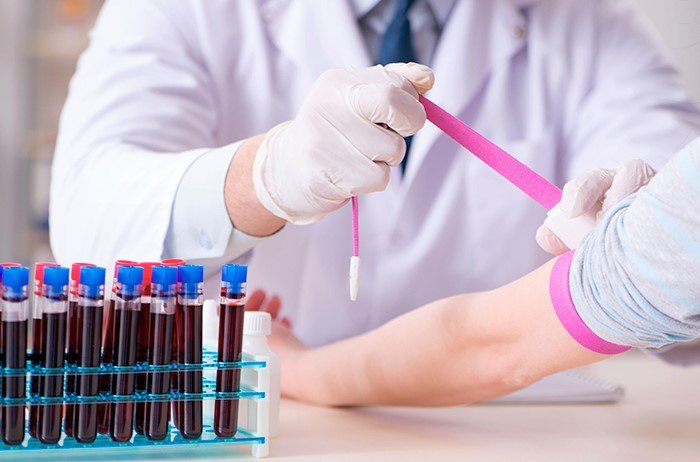Improving Hospital Access to Timely and Accurate Diagnostic Equipment: Strategies for Success
Summary
- Hospitals play a critical role in ensuring patients have access to timely and accurate diagnostic equipment for improved healthcare outcomes.
- Effective supply and equipment management is essential for hospitals to maintain a high standard of care and efficiency in the United States.
- By implementing strategic planning, utilizing technology, and fostering collaboration, hospitals can enhance access to diagnostic equipment and ultimately improve patient outcomes.
Introduction
In the United States, hospitals are at the forefront of providing quality healthcare to patients. Access to timely and accurate diagnostic equipment is crucial for healthcare professionals to make informed decisions and provide the best possible care. Effective supply and equipment management is key to ensuring hospitals have the necessary tools to deliver quality healthcare services. This article explores how hospitals can improve access to diagnostic equipment for better healthcare outcomes.
The Importance of Timely and Accurate Diagnostic Equipment
Timely and accurate diagnostic equipment is essential for Healthcare Providers to diagnose and treat patients effectively. Whether it's x-ray machines, MRI scanners, or laboratory equipment, these tools play a critical role in identifying and monitoring medical conditions. Here are some reasons why access to such equipment is vital:
Early Detection and Treatment
Timely access to diagnostic equipment allows Healthcare Providers to identify medical conditions at an early stage. Early detection can lead to timely intervention and better treatment outcomes for patients.
Precision Medicine
Advancements in diagnostic technology have paved the way for precision medicine, where treatment plans are tailored to an individual's genetic makeup and specific characteristics. Access to accurate diagnostic equipment is necessary to deliver personalized care to patients.
Improved Patient Outcomes
Access to timely and accurate diagnostic equipment can lead to improved patient outcomes, including faster recovery times, reduced complications, and overall better quality of life. By investing in state-of-the-art equipment, hospitals can enhance the level of care they provide to patients.
Challenges in Hospital Supply and Equipment Management
While the importance of timely and accurate diagnostic equipment is clear, hospitals face several challenges in managing their supply and equipment effectively. Some common challenges include:
Budget Constraints
Hospitals often operate on tight budgets, which can make it challenging to invest in new diagnostic equipment or upgrade existing technology. Budget constraints can limit access to state-of-the-art equipment and hinder the delivery of quality healthcare services.
Inventory Management
Managing inventory for diagnostic equipment can be complex, especially in large hospital settings. Ensuring that equipment is properly maintained, calibrated, and replaced when necessary is essential for optimal performance and patient care.
Technological Advances
The rapid pace of technological advances in diagnostic equipment can make it challenging for hospitals to keep up with the latest innovations. Staying current with technology trends is essential for delivering high-quality healthcare services to patients.
Strategies for Improving Access to Diagnostic Equipment
Despite the challenges hospitals face in managing their supply and equipment, there are several strategies they can implement to improve access to diagnostic equipment and enhance healthcare outcomes. Some effective strategies include:
Strategic Planning
Developing a strategic plan for supply and equipment management is essential for hospitals to align their resources with their healthcare goals. By setting priorities, identifying needs, and allocating resources effectively, hospitals can ensure they have access to the necessary diagnostic equipment for improved patient outcomes.
Utilizing Technology
Technology plays a crucial role in enhancing Supply Chain management and equipment maintenance in hospitals. By leveraging data analytics, automation, and predictive maintenance tools, hospitals can streamline their operations, reduce downtime, and ensure their diagnostic equipment is operating at peak performance.
Fostering Collaboration
Collaboration between Healthcare Providers, equipment manufacturers, and Supply Chain partners is vital for improving access to diagnostic equipment. By forming strategic partnerships and sharing best practices, hospitals can leverage collective expertise to overcome challenges and deliver better healthcare outcomes for patients.
Conclusion
Access to timely and accurate diagnostic equipment is essential for hospitals to provide quality healthcare services and improve patient outcomes. By implementing strategic planning, utilizing technology, and fostering collaboration, hospitals can enhance access to diagnostic equipment and deliver the best possible care to patients in the United States.

Disclaimer: The content provided on this blog is for informational purposes only, reflecting the personal opinions and insights of the author(s) on the topics. The information provided should not be used for diagnosing or treating a health problem or disease, and those seeking personal medical advice should consult with a licensed physician. Always seek the advice of your doctor or other qualified health provider regarding a medical condition. Never disregard professional medical advice or delay in seeking it because of something you have read on this website. If you think you may have a medical emergency, call 911 or go to the nearest emergency room immediately. No physician-patient relationship is created by this web site or its use. No contributors to this web site make any representations, express or implied, with respect to the information provided herein or to its use. While we strive to share accurate and up-to-date information, we cannot guarantee the completeness, reliability, or accuracy of the content. The blog may also include links to external websites and resources for the convenience of our readers. Please note that linking to other sites does not imply endorsement of their content, practices, or services by us. Readers should use their discretion and judgment while exploring any external links and resources mentioned on this blog.

